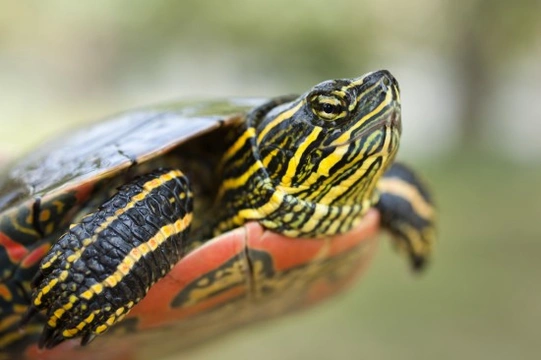Pets
Pets for studWanted petsBreedersAccessories & services
Knowledge hub
Support
Support & safety portal
Caring for a painted turtle
The painted turtle is one of the most popular pet turtles kept in the UK, but also one that is often misunderstood and runs the risk of being incorrectly cared for. One of the main problems that arises for inexperienced owners is buying a juvenile of the species without realising how large it may potentially grow, and not allowing for adequate provision of housing as a result of this.
They can also live for up to fifty years, so should by no means be thought of as a short term pet! Growing up to ten inches long with the females being larger than the males, the painted turtle (Chrysemys picta) is also sometimes referred to as the Western, Eastern, Southern or Midland painted turtle, depending on their origins.
If you own or are considering getting a painted turtle, it is important to make sure that you are caring for them properly and able to meet all of their needs. In this article, we will cover the basics of painted turtle care to get you going.
Housing a painted turtle
As an aquatic turtle, the painted turtle spends the larger part of its day in the water, with shorter spells basking or eating. While many turtle species spend a lot of time on land, the painted turtle’s housing and care requirements are more similar to that of fish than most other turtle species, as they require their tank to be largely water based, with lots of room to swim.
Ideally, a tank that can hold at least a hundred gallons of water, plus added space for land is required to keep a painted turtle happy. You should provide for this using gravel sloping into the water with a nice dry area and basking rock for your turtle, as well as potentially using a floating platform within the water itself.
As with all turtle species, the water needs to be very clean and well monitored, as dirty or poor quality water can lead to infections and illnesses in your pet. A good quality aquarium filter is needed to provide for this, as well as mechanical and biological filtration and regular water changes.
Feeding a painted turtle
Like most aquatic turtle species, the painted turtle likes to eat in the water, but within the home it is sometimes possible to encourage them to eat on land in an attempt to keep the water clean.
Commercially made pellets designed for aquatic turtles are the best way to provide your pet with their staple diet, but they also need the provision of leafy greens and vegetables too. Dandelions, parsley and dark lettuce leaves can be added to the tank for your pet to snack on, and dried shrimp pieces or cubes of apple can make a tasty treat too.
Painted turtles can also eat small insects and crustaceans, which help to provide calcium to help to keep their shells in good condition.
Lighting provision
Like all turtles, the painted turtle needs the presence of UVB light to convert calcium into nutrients, something that standard aquarium lighting does not provide. A temperature of around 85 degrees is optimum, which may mean that you need to heat the water of the tank using an aquarium heater as well.
UVB lighting should be switched on for twelve hours per day year round, and the bulb replaced every six months, as they tend to lose their effectiveness long before the bulb itself will expire.
The health of the painted turtle
Once you have the right set up, enough space and good lighting provision, the painted turtle is relatively easy to take care of on an ongoing basis. However, they are prone to some health issues and infections that all owners should be aware of.
Internal parasites can become a problem if they are present in large numbers within the intestine, and it is wise for this reason to get your pet checked over annually by your vet and ask them to perform a faecal examination at this time as well.
Good water quality is a must for the painted turtle, and poor water quality can lead to algae build up on the shell, infections, and other problems that you should work hard to avoid!
Keep an eye on the length of your turtle’s nails and beak, and ensure that they do not grow overly long. Depending on your own particular turtle, you may need to arrange to have the beak and the nails trimmed down by your vet now and then too.
Keep a close eye on the health of your turtle’s shell, as this is often the first area that will show problems in the making. Bone diseases, infections and deformities can all occur from poor husbandry, so if you spot any problems, act quickly to get them under control.



